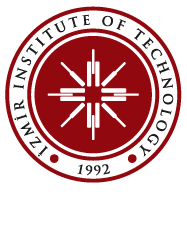FE420 – Graduation Project Topics
Here you can find topics for FE420 course. Do not hesitate to ask the details and do not be scared about the topics. For questions, you can contact to Mr. Berk.
Topic 1: Stochastic Modelling of Population Kinetics
Prerequisite: FE204
Objective: To model the growth of a population in the presence of positive and negative factors. Effect of those factors and the sensitivity analysis on the growth.
Work Packages: Student will learn the software and solve the differential equation stating the case. S/he will determine the factors affecting the population and construct the sensitivity analysis. S/he will discuss the findings and compare with the literature data.
Topic 2: Modelling and Simulation of Double Pipe Heat Exchanger: A CFD and Experimental Comparison
Prerequisite: FE202 and FE301 (still taking is also acceptable)
Objective: To simulate the momentum and heat transfer in the exchanger. Effect of temperature and flow rate on the heat transfer.
Work Packages: Student will measure the dimensions of present exchanger and transfer to a CAD software. S/he will learn how to use the CFD software and model the present system. S/he will conduct the experiments through the system and compare the findings coming from the simulation. S/he will discuss the data obtained and compare it with the literature.
Topic 3: Simulation of Cooking of Hot Dog by FDM and FEM
Prerequisite: FE301 (still taking is also acceptable)
Objective: To simulate the heat transfer on a solid body by using FDM and FEM. Comparison of those methods and the experimental results.
Work Packages: Student will derive the governing equation for heat transfer to use in the FDM. S/he will learn how to use the CFD software. S/he will perform the experiment and get the parameters that will be used in the modelling. S/he will compare and discuss the findings and make a literature comparison.
Topic 4: Simultaneous Heat and Mass Transfer Modelling of a Food Drying System
Prerequisite: FE301 and FE302
Objective: To model the heat and mass transfer simultaneously. Estimate the effect of the parameters. Make a comparison with a drying example.
Work Packages: Student will learn how to use the software. S/he will derive the macroscopic energy and mass balances. S/he will conduct the drying experiment and get the kinetics data to use in the model. S/he will provide a temperature profile and drying data. S/he will compare and discuss the findings with the literature.
